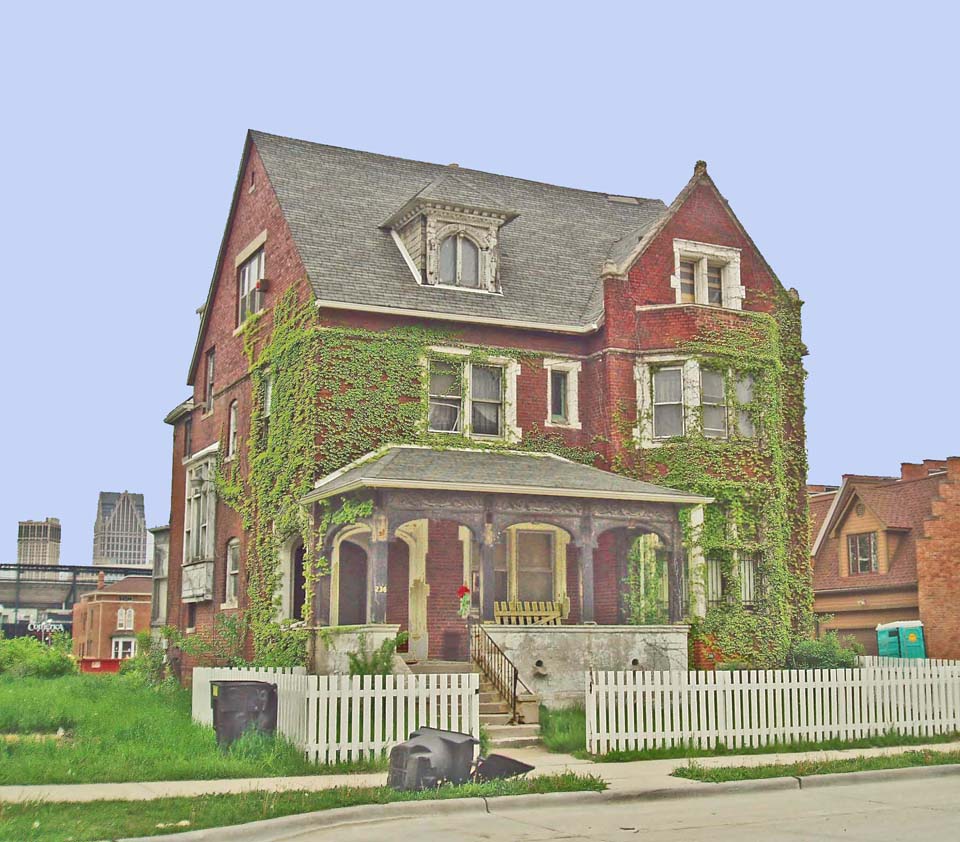
Bernard Ginsburg Home
236 Adelaide in Brush Park near downtown Detroit
Bernard Ginsburg was born in 1864 in Columbus, Indiana, but
by 1881, his father had established a business in Detroit dealing in iron,
steel and other heavy
metals. Bernard Ginsburg graduated from Detroit High School and went into his
father's prosperous business. By 1900, he was a very well-to-do businessman who
sat on the boards of various firms. He became active in Republican Party politics
and served as Detroit’s Commissioner of Public Lighting from 1902 to 1905.
Perhaps, he was best known for his very active role in Jewish charitable organizations
both in Detroit and nationally. At that time there were many Eastern European
Jews migrating into American cities who needed a great deal of help, and
few governmental programs existed to aid the poor. Consequently, religious organizations
provided
assistance to many. Shortly after the turn of the 10th century, Ginsburg
served as president of United Jewish Charities of Detroit and as vice-president
of the National Conference of Jewish Charities.
Detroit architect George Mason recognized the exceptional talents of
Albert Kahn and encouraged him to spend 1891 in Europe studying that
continent's magnificent
buildings. When Kahn returned to Detroit, he worked with George Mason, but
in 1896, decided to enter a partnership with two other Detroit architects:
Alexander
Trowbridge and George W. Nettleton. The next year, Trowbridge left the partnership
to accept an appointment as dean of Cornell University’s School of Architecture
in rural New York State. Then, in 1900, George Nettleton died.
The home that you see pictured here was designed by George Nettleton and Albert
Kahn and completed in 1898. It represents the early work of Kahn. It is a two-and-one-half-story,
single-family residence built with red brick and stone. The most unusual feature
of this home is the carved wood arcade porch extending
across
much of the width and resting upon stone walls. You have to approach the home
closely to appreciate the unique carvings of statues that are attached to the
supports for this impressive porch’s hip roof. The windows and door have
frames and quoins of stones. This apparently, helps to mark this home as constructed
in the English Renaissance tradition.
Detroit once had a reputation for residentially segregatind blacks and for
keeping Jews out of many residential neighborhoods. Indeed, many of the developments
constructed beyond Grand Boulevard were plotted with restrictive covenants
to
prohibit the residence of blacks or Jews. And restrictive covenants were upheld
by both the state’s Supreme Court and the federal Supreme Court until
Orsel McGhee from Seebaldt Street on the West Side successfully challenged
them in
the later 1940s. The segregation of blacks dates from World War I in Detroit.
I presume that the residential segregation of Jews dates from the time when
restrictive covenants became popular—the 1920s. Clearly Bernard Ginsburg
built his home in what was one of the city’s most prestigious neighborhoods
in the 1890s. There were some Detroit neighborhoods, including Boston-Edison,
that did
not exclude Jewish residents.
Architects: George W. Nettleton and Albert Kahn
Architectural Style: English Renaissance
Date of Construction: 1898
Use in 2007: Undergoing rehabilitation
City of Detroit Designated Local Historic District: This home is located
with the Brush Park Historic District as designated by the City of Detroit.
State of Michigan Register of Historic Sites: P25126
National Register of Historic Places: #91001015 Listed August 19, 1991
Photograph: Ren Farley (January 11, 2007)
Return to Historic Residences
Return to Homepage